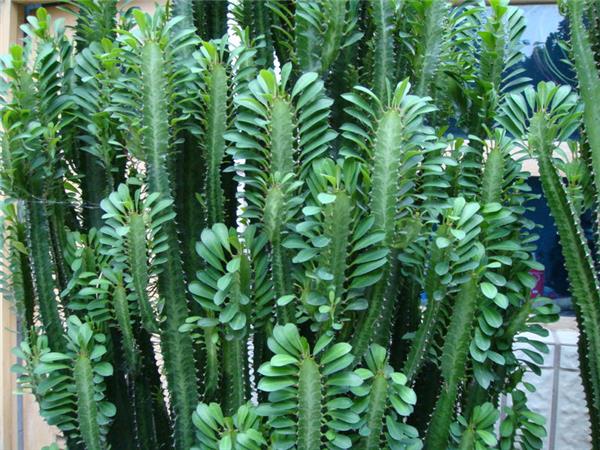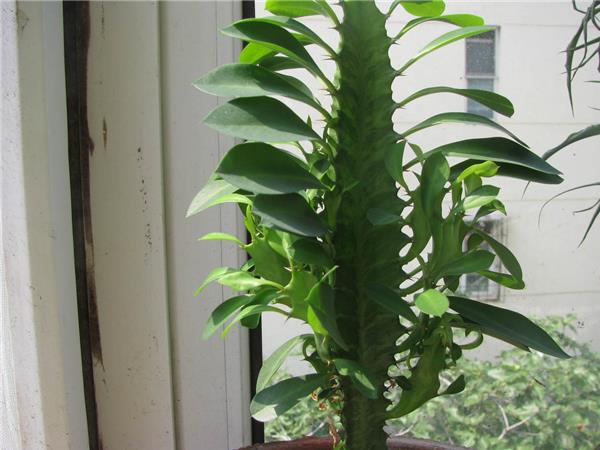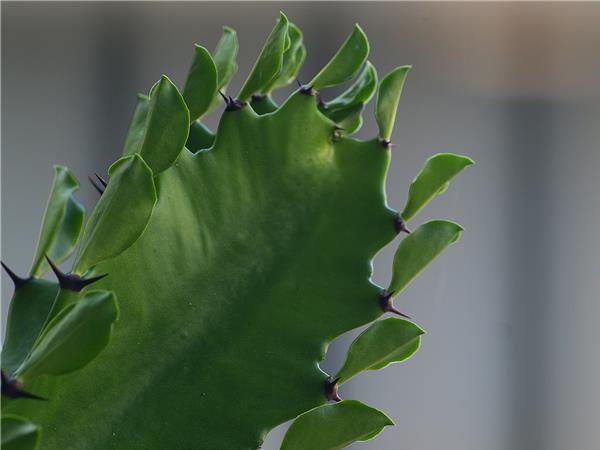Is the Brazilian keel poisonous? the culture method of Brazilian keel
The viewing angle of the Brazilian keel belongs to a relatively different kind, because its leaves are very small and do not blossom very often, so strictly speaking, this is actually a subjective "stem" plant, which has similar ornamental value as a single tree.

I. morphological characteristics of Brazilian keel
The plant is trigonous, much branched, turquoise, 4 to 5 meters high, with small spines on the edges, very short. Keel column summer white flowers, 4 to 9, clustered on the upper thorn seat, day open and night closed (potted plants are generally not easy to bloom), berries small round, blue-purple, edible.
2. Ecological habits of Brazilian keel
Like sufficient sunshine, not cold-resistant, but drought-resistant, like dry loam. The keel column needs plenty of sunshine, the branches are blue-green, the leaves are like fish scales, and they sparkle in the sun, with numerous bodies and sharp swords, which are spectacular and are good for potted flowers.
The north should be kept indoors in winter, and the south can be planted in the open field or used as a fence, which is not only a green barrier, but also beautifies the courtyard, and the fragrance of flowers and fruits can be seen in summer.

III. Garden use of Brazilian keel
Suitable for home, office environment decoration, used to beautify the environment, purify the air and so on play a good role.
Keel column is known as "omnipotent rootstock". It can be grafted with tiger plum and crab claw orchid with keel column.
Is the keel of Brazil poisonous?
Keel fleshy stem has sharp thorns, in addition, the white milk in the stem is poisonous, especially can not enter the eye, so in the family culture, special attention should be paid to the appropriate location to avoid stabbing and poisoning in children and the elderly. The juice of the keel is poisonous, as long as the branches and leaves are not broken, the milky juice will not flow out. If you touch it accidentally, you must wash your hands immediately and do not enter it, because someone has tried it and your mouth will go numb soon after the entrance.
We should pay more attention to planting the keel indoors, because there are sharp thorns on the fleshy stem of the keel, and the white milk in the stem is poisonous, especially not into the eye, so we should pay special attention to the location of home training in order to avoid stabbing and poisoning in children and the elderly. In addition, the keel flower is drought-resistant, sun-resistant, suitable for sunny places, and not suitable for indoor darker places, so the keel flowers for indoor viewing should be placed close to the window of the sun as far as possible.

5. Culture methods of Brazilian keel
1. The Brazilian keel has extensive management and lax requirements on soil, but it also chooses sandy soil with low viscosity and strong drainage performance, which is beneficial to root respiration and absorption of nutrients.
two。 Usually should pay attention to watering, wait until the soil is slightly dry in watering can not be too much, otherwise it is easy to cause root rot.
3. Brazilian keel likes the sun, try to put it in a sunny place, put it in a cool place at midday in summer, and put it in a sunny place as much as possible the rest of the time.
4. Brazilian keel does not have high requirements for fertilizer, so you should first put a good base fertilizer when planting, so that you don't have to maintain it in the future. When changing the basin in spring, some corrosive organic fertilizer is also applied appropriately, but it can not be too thick, which will produce the phenomenon of burning roots.
5. Usually, we should pay attention to pruning, cutting off more branches and buds is conducive to beautiful appearance, cut mature branches and buds can also be grafted on other plants after drying, and usually pay attention to spraying pesticides to avoid red spider pests. Pesticides can choose 1000 to 2000 times omethoate.

Generally speaking, the Brazilian keel is relatively easy to breed, otherwise it will not be used as a rootstock for grafted crab claw orchid, tiger plum and other flowers, because its stem can store a lot of nutrients needed by these flowers, and will not wither because of it, so if you want to raise tiger plum and crab claw orchid, you can also raise a Brazilian keel first.
- Prev

The principle of protecting flowers in house how to preserve potted flowers
The principle of protecting flowers in house how to preserve potted flowers
- Next

Matters needing attention in the culture of golden unicorn flowers from seven aspects
Matters needing attention in the culture of golden unicorn flowers from seven aspects
Related
- Wuhan Hospital Iron Tree Blooming Result Was Instantly Frightened by the Gardener Master
- Which variety of camellia is the most fragrant and best? Which one do you like best?
- What is the small blue coat, the breeding methods and matters needing attention of the succulent plant
- Dormancy time and maintenance management of succulent plants during dormancy
- Minas succulent how to raise, Minas succulent plant pictures
- What are the varieties of winter succulent plants
- How to raise succulent plants in twelve rolls? let's take a look at some experience of breeding twelve rolls.
- Attention should be paid to water control for succulent plants during dormant period (winter and summer)
- Watering experience of twelve rolls of succulent plants
- Techniques for fertilizing succulent plants. An article will let you know how to fertilize succulent plants.

